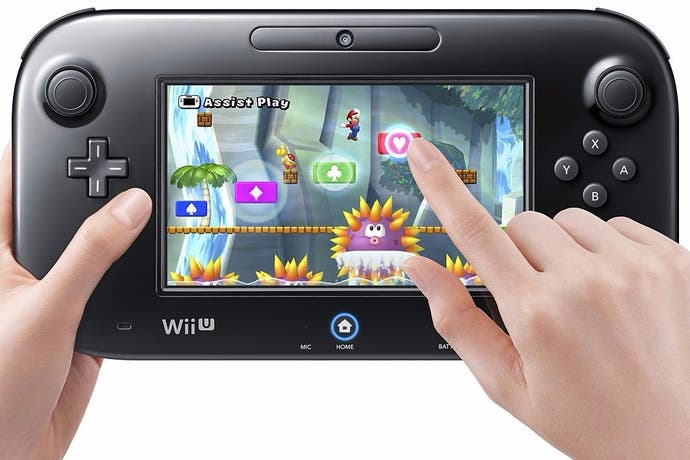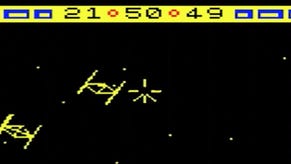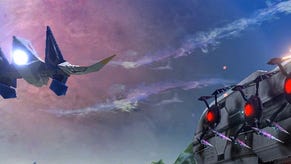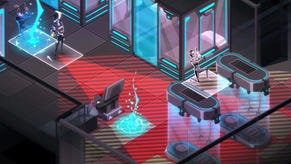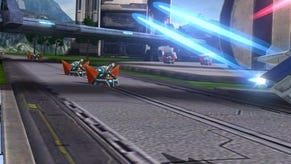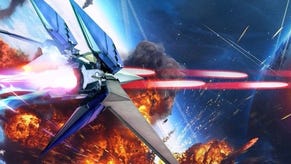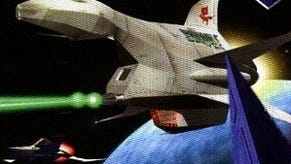The end of Nintendo's weird GamePad era
Star Fox Zero and Guard look set to close a peculiar chapter in the company's history.
I don't know about you, but I absolutely adore the mad side of Nintendo. The one that announces the localisation of a game with a 10-minute mix of surreal salesmanship and cut-glass cuteness. The one that pauses halfway through another conference to contemplate an unpeeled bunch of bananas. The one that got so carried away with the 3D fad it bet on the marvel of glassless 3D in a handheld whose ubiquity has helped obscure its eccentricity.
It's the same Nintendo that went all in on one of its most bizarre hardware ventures since the Virtual Boy - only this time, it's had the miserable sales figures to match. The Wii U has been an oddity since day one, when Nintendo never seemed quite able to pin down what it was that made this unfortunately named successor to one of the company's great success stories stand out. The magic wand that waved the Wii into 100 million households was nowhere to be seen. Instead, we got this strange lumpen pad, an off-kilter console appropriation of the DS's dual-screen set-up with its own lightly bleached monitor.
And I absolutely love it. The mini-game compilation Nintendo Land showed the potential of having two very different screens, and how talented developers could inject a social frisson in the space between them. Other party games have come and gone but it's Nintendo Land, well over three years on, that I keep returning to. In another few years, when I mark it down as one of the games of the generation, I'll be doing so with a completely straight face. Ubisoft, meanwhile, used the friction found in the empty space between those screens to inject a little extra suspense in its atmospheric horror game Zombi U.
Since then, though? Not so much. There's been no equivalent to Skyward Sword - the Wii's fascinating exploration of what's possible with motion control in the framework of a well-established series - and even if Splatoon makes great use of the gyroscope and second screen, it's all too easy to imagine playing without all those bizarre accessories the GamePad brings. A sizeable number of players already choose to. More damningly, there's been no equivalent of Wii Sports to sell the concept, and since launch the Wii U's GamePad has struggled to justify its existence (not, to be perfectly clear, that it's got in the way of an enviable back catalogue of brilliance that can be neatly streamed to that second screen).
When Nintendo placed a fresh emphasis on the GamePad at E3 in 2014 it felt like a belated rediscovery of all that latent potential left untapped since launch. Miyamoto's Star Fox experiment was a welcome return for an old favourite, flanked by two smaller experiments, Project Giant Robot and Project Guard. The robot's been left on the scrapheap for now, sadly - while it was the slimmer game, it was certainly the more entertaining of the pair - but we do at least now have Star Fox Zero, which sees Platinum Games filling in the colour for Miyamoto's initial sketch with the studio's typical verve and flair, and Star Fox Guard, which delivers a competent, quirky tower defence game.
They're both emboldened by their experimental edge. Star Fox Zero is a nostalgic throwback to the innocence of the N64 age that might have been a little too retrograde were it not for its unique control system which, against all odds, works, while Star Fox Guard is a cute diversion and a neat bonus for Zero players, but little more. Rather than a reaffirmation of what Nintendo was aiming for with the Wii U, it feels like a muted farewell to an experiment that can fairly be summed up as a failure, even if it was a noble one. The second screen hasn't found its second coming, and it's a little late to expect anything new on the horizon.
Will the second screen be resurrected for the forthcoming NX? Given its failure to catch on or be fully embraced by even Nintendo's own teams, I don't think it can be - and while the streaming technology that allows Wii U games to be played off-screen could be the perfect foundation for the handheld hybrid many expect the NX to be, the idea of using a second screen in pure game design terms seems to be dead in the water. (A happy footnote, however, is that Sony has recently realised the asymmetry put forward by the likes of Nintendo Land is the perfect fit for the second, social screen in its PlayStation VR set-up - the Wii U's legacy endures, if not in the most obvious of places.)
Then there's the question over whether Nintendo can afford to go disruptive with its new hardware. It's a strategy that worked to stellar effect with the Wii before falling completely flat with the Wii U, and as people look to the NX to offer parity with the PlayStation 4 and Xbox One while getting those third-party publishers back on board, it doesn't feel like Nintendo can afford to gamble on another oddity.
Maybe I'll be proven wrong at the NX's unveiling, but the release of GamePad-centric games like Star Fox Zero and Star Fox Guard feels like closure on a peculiar chapter in Nintendo's history. With its offbeat experiments and one-off experiences, it's one I'll certainly cherish. The last few years have seen a frequently embattled Nintendo at its most eccentric, and I've absolutely loved it.
